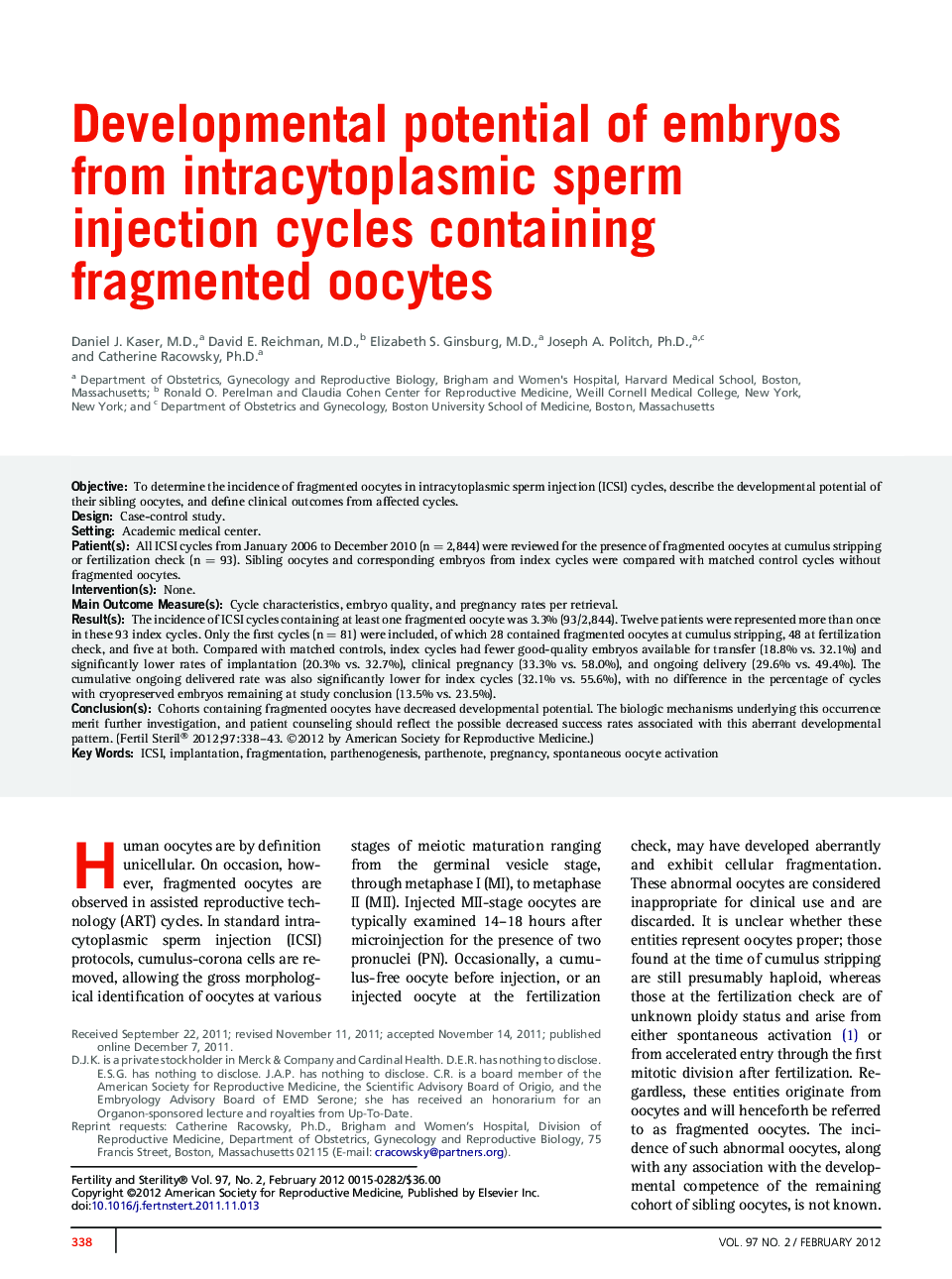| Article ID | Journal | Published Year | Pages | File Type |
|---|---|---|---|---|
| 3939144 | Fertility and Sterility | 2012 | 6 Pages |
ObjectiveTo determine the incidence of fragmented oocytes in intracytoplasmic sperm injection (ICSI) cycles, describe the developmental potential of their sibling oocytes, and define clinical outcomes from affected cycles.DesignCase-control study.SettingAcademic medical center.Patient(s)All ICSI cycles from January 2006 to December 2010 (n = 2,844) were reviewed for the presence of fragmented oocytes at cumulus stripping or fertilization check (n = 93). Sibling oocytes and corresponding embryos from index cycles were compared with matched control cycles without fragmented oocytes.Intervention(s)None.Main Outcome Measure(s)Cycle characteristics, embryo quality, and pregnancy rates per retrieval.Result(s)The incidence of ICSI cycles containing at least one fragmented oocyte was 3.3% (93/2,844). Twelve patients were represented more than once in these 93 index cycles. Only the first cycles (n = 81) were included, of which 28 contained fragmented oocytes at cumulus stripping, 48 at fertilization check, and five at both. Compared with matched controls, index cycles had fewer good-quality embryos available for transfer (18.8% vs. 32.1%) and significantly lower rates of implantation (20.3% vs. 32.7%), clinical pregnancy (33.3% vs. 58.0%), and ongoing delivery (29.6% vs. 49.4%). The cumulative ongoing delivered rate was also significantly lower for index cycles (32.1% vs. 55.6%), with no difference in the percentage of cycles with cryopreserved embryos remaining at study conclusion (13.5% vs. 23.5%).Conclusion(s)Cohorts containing fragmented oocytes have decreased developmental potential. The biologic mechanisms underlying this occurrence merit further investigation, and patient counseling should reflect the possible decreased success rates associated with this aberrant developmental pattern.
